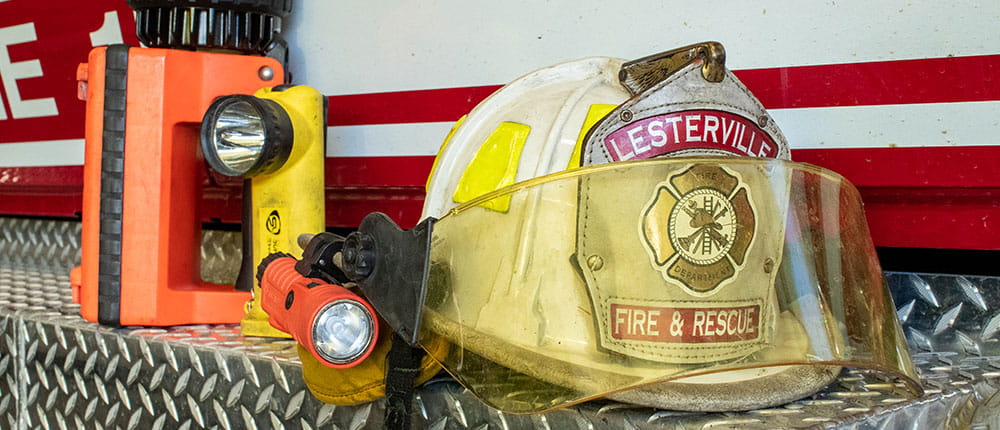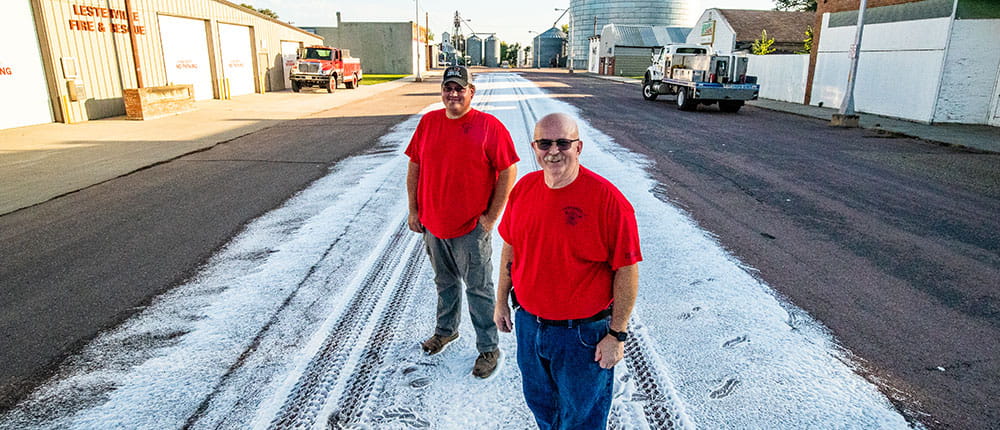Members of Lesterville Fire and Rescue, about 80 miles southwest of Sioux Falls, S.D., may not have a huge budget, but what they do have is ingenuity, skills and the willingness to spend their free time designing fire trucks to meet the needs of their rural community.
Instead of buying expensive new trucks, members in the fire department stripped down two Stewart & Stevenson military trucks and two international boom trucks (a commercial truck chassis carrying a hydraulic crane) to build two tankers and two brush attach trucks from scratch.
Volunteer firefighter Jim Kulish and his dad, who farm near Lesterville, S.D., built custom spray bar nozzles that improve the function of the foam system and provide better safety for firefighters by allowing them to stay inside the truck when battling grass fires.
The pride the team takes in the work is evident in the details, like lettering cut out of aluminum panels that were drawn on a CAD program and cut on a plasma table.
“Volunteer firefighters in the department put their skills together to create the trucks that will best assist them,” says Paul Scherschligt, fire chief. “And we have many ties with the farming community and businesses that can provide specialized equipment to make our dreams come true.”
Fire tankers like the ones in Lesterville don’t come cheap – new 3,500-gallon tankers cost around $200,000 to $300,000 each and an engine runs about $700,000. That’s out of range for a small, rural fire department that covers many of its costs through writing grants and hosting fundraisers, says Scherschligt.
With hundreds of hours of volunteer labor, each truck cost about $30,000 instead.
The team didn’t have trained engineers or blueprints, just “a piece of notebook paper and a ruler on a good day,” says Kulish.
Lesterville Fire and Rescue covers about 98 square miles and 1,400 people, says Scherschligt, and handles about 65 calls a year with its 25 trained volunteer firefighters. The most common calls are medical emergencies, grass fires, structure fires and vehicle crashes.
 A matching grant from CHS based in Brandon, S.D., in partnership with the CHS Seeds for Stewardship program, allowed the fire department to purchase helmet-mounted flashlights.
A matching grant from CHS based in Brandon, S.D., in partnership with the CHS Seeds for Stewardship program, allowed the fire department to purchase helmet-mounted flashlights.
In some of those calls, especially grain bin rescues and house or barn fires, firefighters need heavy-duty flashlights to help them do their jobs. That’s why Scherschligt is grateful for a recent $5,000 matching grant from CHS based in Brandon, S.D., in partnership with the CHS Seeds for Stewardship program, that allowed his hard-working team to buy helmet-mounted flashlights.
“If not for the grant, each individual would have had to buy their own flashlight for $139 each,” he says. “Everyone in our department does extra. It’s not just when the pager goes off or there’s a training – they clean trucks, work on fundraisers, and help build the trucks. So I can’t say enough about this CHS grant and how awesome it is to be a recipient.”




